Default Sort Cheap first Expensive first New first Used first
FilterIf you are thinking about buying a real decommissioned aircraft or want a fuselage as an art object at a reasonable price, then we suggest that you familiarize yourself with this catalog. We have a large offer, a variety of aircraft made in the USSR, Russia and the world. There is also a large selection of replicas, copies of legendary aircraft for sale.
Tehclub takes care of all the transportation, restoration and painting of aircraft. If you want to buy a plane without additional services, you can of course pick it up yourself.
The idea of making a unique restaurant inside the plane is not new. This solution was introduced by craftsmen in the USSR. Now this topic is popular again, especially in dynamically developing China. Watch an interesting video how a Chinese man bought a plane and opened a restaurant there . Or The best cafe in the world. However, we have this huge potential creative business has not yet taken place. The decommissioned aircraft can also be used as a movie theater, quest, or other entertainment. Also a fairly profitable business is an airplane with a built-in simulator - an airplane simulator, which is installed in shopping centers or other places. These and other aircraft can be found in the decommissioned aircraft catalog. Complete aircraft with all documents are sold under a sales contract. We also have Decommissioned helicopters on a pedestal, which you can freely buy.
These and other aircraft can be found in the decommissioned aircraft catalog. Complete aircraft with all documents are sold under a sales contract. We also have Decommissioned helicopters on a pedestal, which you can freely buy.
For more information about airplanes on a pedestal, about the purchase process and technical points, read the link: Frequently asked questions FAQ: Planes on a pedestal
Subscribe to new publications
Select a category to subscribeAll categories Aircraft Sport aircraft, light Passenger, multi-purpose aircraft Aircraft business class, VIP Planes from Europe and America Decommissioned aircraft Replicas, models, copies of aircraft Aircraft, aircraft systems Helicopters The Helicopters Mi-2 Helicopters Mi-8/171 and modifications Mi-26 helicopters Helicopters from Europe and USA Helicopters Robinson Autogyros, gyroplanes, gyrocopters Decommissioned helicopters Helicopter simulators Replicas, models, copies of helicopters Rent helicopters Conversion techniques and replicas BTR BRDM Tanks real and replica MT-LB Cannons, artillery WWII Conversion technics in rent Ships, boats, yachts Boats Yacht business class Cargo ships The hovercraft Special machinery The building-road technics Excavators Bulldozers Loaders Cranes Agriculture Trucks ATVs Railway transport Vintage and collectible cars For business Equipment, production lines, machine tools Wind tunnels Rides Electric vehicle The electric motorcycles Electric trucks Spare parts for machinery, equipment Spare parts for aircraft Spare parts for the helicopters Spare parts of machinery Truck parts Spare parts for water equipment Spare parts for equipment Spare parts of electric House on the water Buy technique
Frequency of receipt Every three days Every week Every month
By submitting information, you agree to the rules of the site
|
Jetliners in storage at the Phoenix Goodyear Airport in the Arizona desert (Staff Photo) |
Commercial airliners have limited lifespans.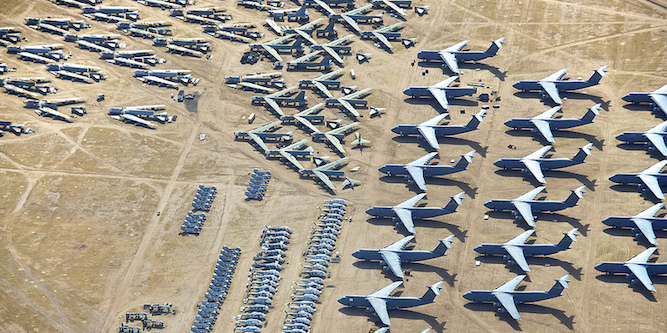 Ultimately, they must be retired from service, stored in "airplane boneyards" or graveyards, and finally dismantled and scrapped.
Ultimately, they must be retired from service, stored in "airplane boneyards" or graveyards, and finally dismantled and scrapped.
Airliner boneyards in the deserts of the western United States provide several types of services:
Similar facilities exist around the world, in countries like the U.K., Spain, France, Australia and other locales.
Some jetliners are temporarily taken off flying status, and must be stored in a environment that is conducive to preservation pending return to service.
An airliner might be stored in a transitional flightline parking area due to economic conditions, fuel prices, airline consolidation, downsizing, airline bankruptcy or other aviation industry fluctuations.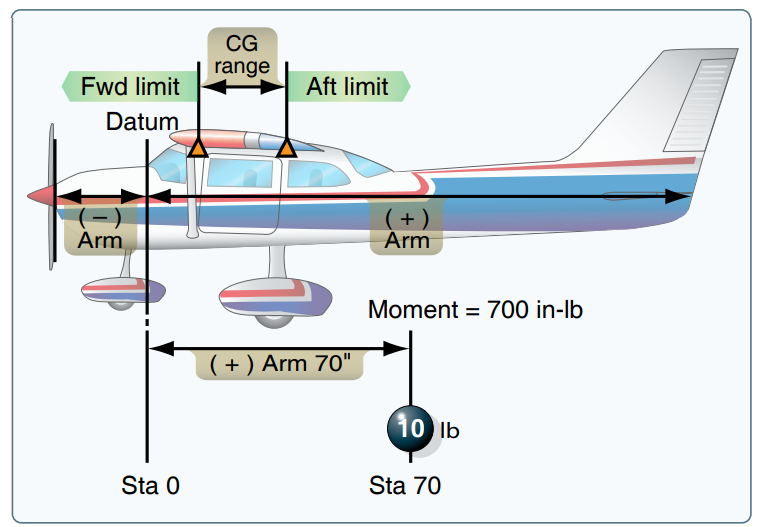
To protect airliners from wind and sun damage during their storage, engines and windows are tightly covered with white, reflective materials. A sealed airliner can thus be stored safely, for years, until the time comes to return it to active duty, or salvage.
Panoramic view of jetliners in storage at the Phoenix Goodyear Airport (Staff Photo) |
Boeing 747 airliners from Atlas Air and Southern Air in storage at the Mojave Airport in the California desert |
Continental Airlines Express jets in storage in the desert at the Kingman Airport in Arizona (Staff Photo) |
Ex-Delta Airlines Boeing 757 airliners being reclaimed at Pinal Airpark, Arizona (Staff Photo) |
There is no set industry rule or standard, but many commercial airliners reach "end of life" at about 25 years of age.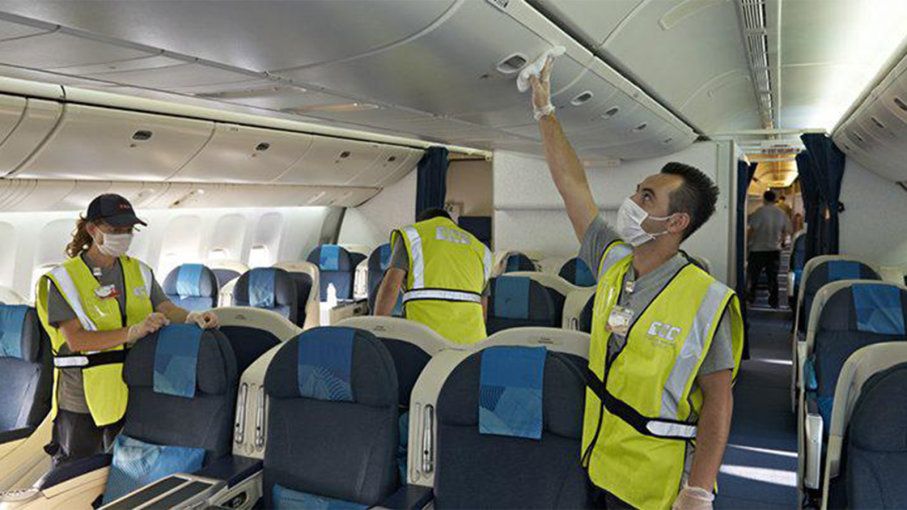 Aircraft "age" is measured in not only in years, but also in terms of pressurization cycles, which cause stress on the fuselage and wings. Airliners that make more long trips are stressed at a lower level than those flying several short flights a day.
Aircraft "age" is measured in not only in years, but also in terms of pressurization cycles, which cause stress on the fuselage and wings. Airliners that make more long trips are stressed at a lower level than those flying several short flights a day.
Airliners being dismantled at the Roswell International Air Center in New Mexico |
Additional factors such as fuel prices and efficiency, evolving aviation regulation, operational costs, technical obsolescence, and depreciation enter into this end of life decision.
As an airliner ages, maintaining airworthiness becomes more expensive, a point in time in which an airline will decide that the best business option is to sell the aircraft. Eventually, all airliners are removed permanently from service and must be dismantled and recycled.
While some might be sold to other airlines, others are worth more when broken down for parts. Those with detailed, accurate service records are often worth more than those whose records have been lost or mismanaged.
Industry experts estimate that 12,000 airliners will face retirement in the next 20 years. Bombardier predicts that 5,000 aircraft in the 60-150 passenger range will face retirement by 2034.
Ex-Iberia Airbus A340 being reclaimed at the Phoenix Goodyear Airport (Staff Photo) |
The nose section of an Airbus airliner at a scrapping yard near the Southern California Logistics Airport (Staff Photo) |
With the large number of airframes being permanently taken out of service, facilities have been established to reclaim/recycle parts, and then to environmentally disassemble the remaining pieces of the aircraft.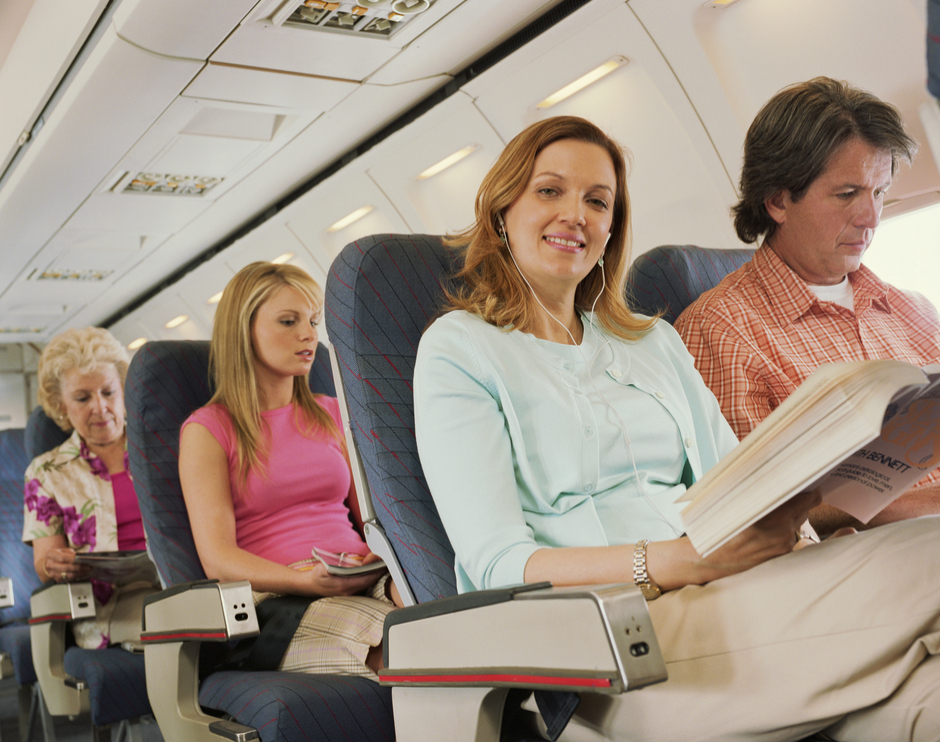
Several of these boneyard facilities exist in the United States such as those at the Kingman Airport and the Mojave Air and Space Port.
Other boneyards are located at the Pinal Air Park in Arizona at the Phoenix Goodyear Airport and the Southern California Logistics Airport in Victorville.
The Roswell International Air Center is a also a very active facility in New Mexico. Additional facilities are located in Europe, Australia and other parts of the world.
Similar facilities exist around the world at airplane boneyards in Europe and Australia.
Dismantling an airliner with hundreds of thousands of parts is a complex and challenging process. For example, a Boeing 747 has 6 million parts, 170 miles of wiring and 147,000 pounds of aluminum.
A plane to be scrapped first has its hazardous, toxic and radioactive materials removed, such as fuel, oil, hydraulic fluids, de-icing liquids, and batteries. This is done according to strict environmental regulations and procedures.
Boeing 747 being reclaimed at the Mojave Airport in California |
Valuable parts are then removed, such as flight controls, engines, landing gear, doors, blackbox recorders, APUs, avionics, and windscreens.
Parts such as these can be refurbished and resold for use on active aircraft.
Precious metals including copper, titanium, stainless steel, magnesium, and aluminum are also removed.
Once all reusable parts have been reclaimed, the remaining fuselage and wings are crushed into small pieces for further recycling.
It is estimated that this process allows about 85-89% of an airliner to be successfully "recycled".
Ex-Delta Airlines Boeing 727-232 N518DA at a scrapping yard near the Southern California Logistics Airport at Victorville (Staff Photo) |
Jet engine reclamation operations at the Pinal Airpark, Arizona (Staff Photo) |
Excavator crushing the front fuselage of an aircraft |
| Airliner being crushed into smaller pieces for recycling |
The Aircraft Fleet Recycling Association (AFRA) is a leading global, non-profit trade group devoted to promoting environmentally safe practices in the recyclilng and salvaging of aircraft parts and materials.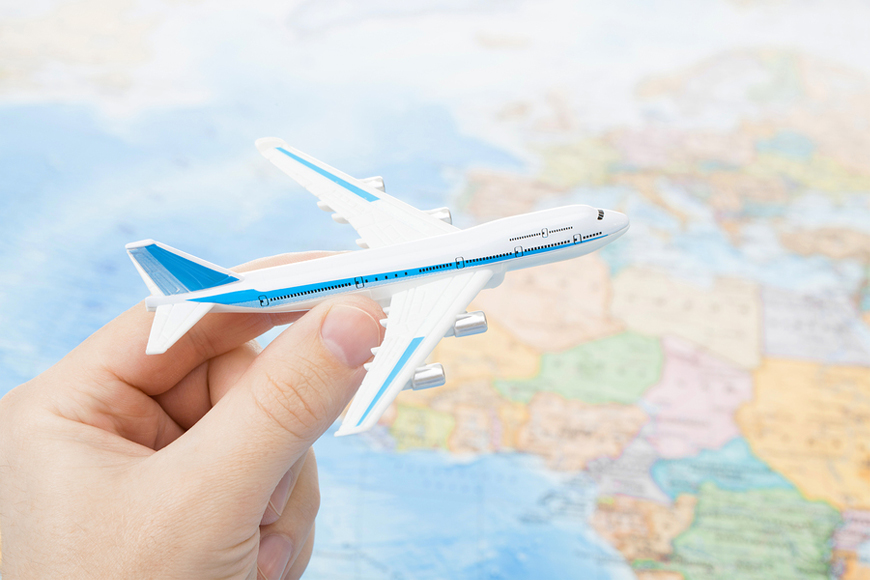 AFRA was established in 2006.
AFRA was established in 2006.
Nearly every major aircraft and engine manufacturer are members of AFRA, including Boeing, Bombardier, Embraer and Rolls-Royce. Membership also includes a large number of companies engaged in aircraft maintenance, repair, storage, parts reclamation and recycling.
AFRA offers disassembly guides, research & development efforts, accreditation, audits, and other services to the industry.
We recommend a visit to the website of the Aircraft Fleet Recycling Association for more information on environmentally-friendly aircraft disassembly and recycling.
Boeing 737-700, GOL Brazilian airlines, registration N320GL, undergoing salvage at the Pinal Airpark in Arizona (Staff Photo, May 2017) |
Southwest Airlines Boeing 737 being reclaimed at the Pinal Airpark in Arizona (Staff photo) |
Delta Air Lines Boeing 757-232 N604DL being salvaged at the Pinal Airpark in Arizona (Staff Photo, May 2017) |
Boeing 747-312, engines removed, at the Phoenix Goodyear Airport in the Arizona desert (Staff Photo) |
Shown below are several books about airplane boneyards available at Amazon that might be of interest to our readers.
| About These Products The Airplane Boneyards website is a participant in the Amazon Services LLC Associates Program, an affiliate advertising program designed to provide a means for sites to earn fees by advertising and linking to Amazon.com and affiliated sites. Amazon offers a commission on products sold through their affiliate links. There is no additional cost to you. |
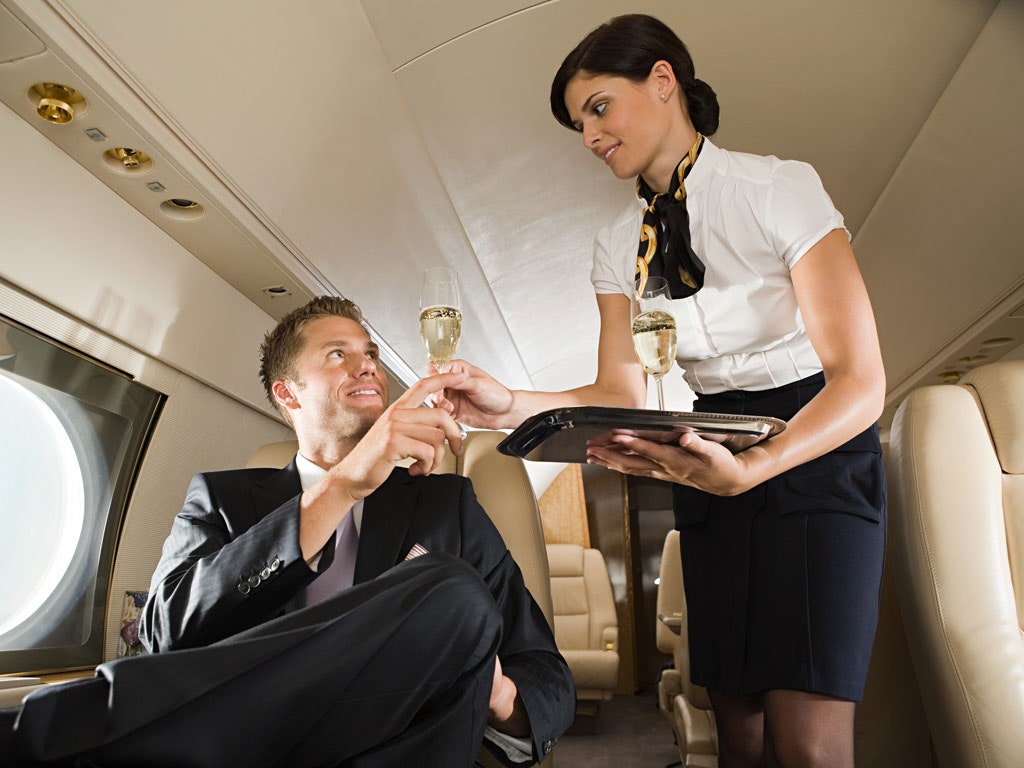 Beijing did not confirm this information, but did not deny it either. Often decommissioned aircraft are given a second life. What other use is found for winged machines that have served their time? And what do they turn into aircraft that can no longer fly? 9 talks about it0003 program "Mysteries of Humanity" with Oleg Shishkin on REN TV.
Beijing did not confirm this information, but did not deny it either. Often decommissioned aircraft are given a second life. What other use is found for winged machines that have served their time? And what do they turn into aircraft that can no longer fly? 9 talks about it0003 program "Mysteries of Humanity" with Oleg Shishkin on REN TV. Retired American military pilot Gino Lucci built a motorhome. The basis for the van was a Douglas transport aircraft from the Second World War. Gino bought a decommissioned aircraft for the price of a used car. He welded the aircraft fuselage without wings and tail section to the truck chassis.
"The structure became a van a little over 11 meters long and almost four meters high. The whole structure weighed about seven tons. To move an object of such gravity along the road, a certain power unit was needed" , - said engineer, roboticist Dmitry Tyurin.
The whole structure weighed about seven tons. To move an object of such gravity along the road, a certain power unit was needed" , - said engineer, roboticist Dmitry Tyurin.
Photo: © Video screenshot
Gino Lucci installed a diesel engine from a tractor with a capacity of 350 horsepower on a van. Thanks to this, the motor home can reach speeds of up to 200 kilometers per hour. Inside the van, the American equipped a residential module, which can be accessed via the boarding ladder.
"The total area of the house turned out to be quite good - 28 square meters. There is a kitchen, a bathroom, a bathroom, a bedroom, a children's room" , - says publicist, aviation expert Mikhail Vakhneev.
Photo: © Video screenshot
American pensioner Bruce Campbell's home is an order of magnitude more spacious than Gino Lucci's van. Bruce settled in the cabin of an airliner with an area of 350 square meters. Campbell never married and dreamed of the original bachelor pad all his life.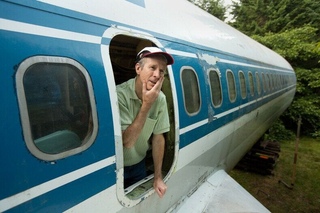 The idea was born by itself when a man saw an advertisement for the sale of a decommissioned passenger aircraft. Bruce bought the airliner for $220,000 and moved it to his land in Oregon.
The idea was born by itself when a man saw an advertisement for the sale of a decommissioned passenger aircraft. Bruce bought the airliner for $220,000 and moved it to his land in Oregon.
“I didn’t even change anything inside the plane, I just transported it to the forest, putting it on special supports. He made himself an ordinary residential house out of the plane and became an object of tourist routes. Tourists look at his house with pleasure, and he earns money on it "," the engineer emphasized.
Photo: © Video screenshot
Hoteliers also make money on decommissioned planes. Airliners that have served their time often get a new life as hotels. In Stockholm there is a hostel equipped on board a jet passenger aircraft. Especially popular with tourists is the "Suite" room, located in the cockpit.
A five-star hotel in the cabin of the Soviet Il-18 was opened at Tegi Airport in the Netherlands. Once upon a time, the General Secretary of the GDR, Erich Honecker, flew on this plane. After decommissioning, the aircraft was used as a cafe, and then converted into a luxury hotel with a bar, cinema, jacuzzi and sauna.
Once upon a time, the General Secretary of the GDR, Erich Honecker, flew on this plane. After decommissioning, the aircraft was used as a cafe, and then converted into a luxury hotel with a bar, cinema, jacuzzi and sauna.
Photo: © Video screenshot
"In Costa Rica, for example, on the territory of the Manuel Antonio National Park, a small hotel was made from a decommissioned Boeing 727" , - said the aviation expert.
After decommissioning, aircraft are usually stored at the airports where they were based. If the aircraft cannot be sold, they are sent for scrap. But often winged cars get a second life as museum pieces. In Ulyanovsk, a site for storing decommissioned aircraft has been turned into the largest Civil Aviation Museum in Russia. Its visitors can board the Soviet liners and even sit at the pilot's helm. And the country's largest Museum of Military Aviation is located in the village of Monino near Moscow. There are 54 thousand exhibits in its collection.
Photo: © Video screenshot
Sometimes aircraft take on a second life not on land, but on water. American craftsmen Dave Drimmer and Jeff Gibbs made a pleasure boat out of a decommissioned passenger plane. They called their original watercraft "Space Muffin". The boat can reach speeds of up to 32 kilometers per hour, it has everything you need for comfortable sea trips: comfortable chairs, a sofa, a bar and air conditioning systems.
"In this case, a part of the fuselage is taken and transferred to some base. It is redesigned, and a second life is obtained, and a very unusual one" , - Mikhail Vakhneev believes.
Photo: © Video screenshot
Another original way to use obsolete aircraft was invented in Turkey. The authorities of the resort town of Kusadasi drowned a decommissioned airliner in the Aegean Sea - this was done to attract tourists. The giant with a wingspan of more than 40 meters has become a great attraction for diving enthusiasts.
You can learn about the incredible events of history and the present, about amazing inventions and phenomena in the program "Mysteries of Humanity" with Oleg Shishkin on REN TV.
The life cycle of any equipment is limited and ends with decommissioning. This also applies to aircraft. Thousands of aircraft are operated and produced every year in the world, which means that some of the aircraft at some point forever become chained to the ground. What happens to them next? There are several options.
Recycling
Recycling is the most commonly used mechanism to end an aircraft's flying career. Aircraft can be sent for cutting in the desert at the aircraft graveyard, or everything is done right at the airport.
The whole process is complex. This is not a simple cutting of the fuselage and wing, because even a decommissioned aircraft often has a whole range of valuable equipment that can be used in the future.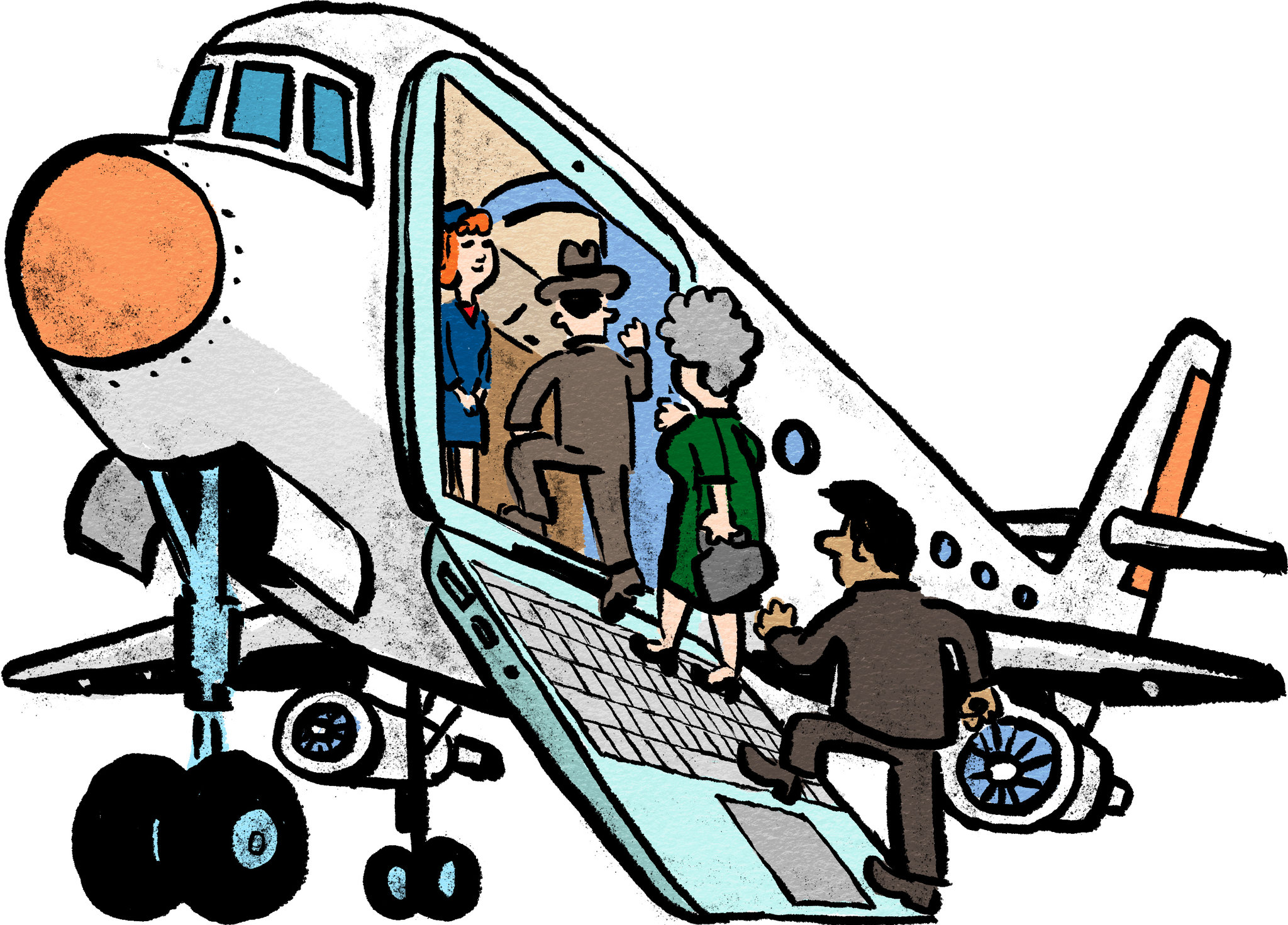
Igor Lesiv was directly involved in the recycling of several aircraft at the Boryspil airport. Here is how he describes the process:
To begin with, a site for disposal is being prepared, which must meet safety and environmental standards. After that, they begin to dismantle the equipment that can be used on other aircraft, if these units still have a resource.
Decommissioned Tu-154 after dismantling the interior and windows. Photo: avianews.comThe initial dismantling usually takes place in the hangar, then the aircraft is rolled out to a special area where the dismantling is completed. Next, proceed to the cutting of the aircraft for scrap. Usually cutting takes place with petrol cutters, the aircraft is cut into pieces.
After cutting, aluminum scrap is taken to the enterprise, where it is remelted. Ferrous metals are also sold for scrap. The remains of the skin, plastic are recycled.
When cutting, aviation enthusiasts can apply, who ask to give them some parts of the aircraft, and sometimes whole pieces of the wing or the pilot's cabin. After the complete disposal of the aircraft, the site is removed from residual debris.
After the complete disposal of the aircraft, the site is removed from residual debris.
Which elements of a decommissioned aircraft can be reused?
For example, chairs or motors. Officially, the engines are not part of the aircraft, but always go separately, and even in the customs declaration they are indicated separately. During the life of an aircraft, which can be several decades, the engines are constantly changing, so it may be that a decommissioned airliner will have engines with a resource. Then they can be sold or installed on another aircraft in the airline's fleet.
By the way, elements of the decommissioned Airbus A340-600 airline Lufthansa launched furniture - several dozen coffee tables, shelves for alcohol and 35,000 key fobs. So even not all aluminum can be sent for remelting.
Museum exhibit
Particularly valuable specimens, for example, the first prototype of some type of aircraft, the first serial aircraft, most often end up in museums. For example, in the National Aviation Museum in Zhuliany you can see the first experimental Il-86, the second experimental/first serial Il-18, the first serial Tu-104, and the pre-production Tu-134. Also in the exposition of the museum there is a Tu-134, which carried Ukrainian presidents and prime ministers.
For example, in the National Aviation Museum in Zhuliany you can see the first experimental Il-86, the second experimental/first serial Il-18, the first serial Tu-104, and the pre-production Tu-134. Also in the exposition of the museum there is a Tu-134, which carried Ukrainian presidents and prime ministers.
Airbus A320 US Airways, which in 2009 landed on the Hudson River in New York, also decided to save for history. It was raised from the river, and after completing all the procedures as part of the investigation of the incident, it was handed over to the Aviation Museum in the city of Charlotte, where the plane was originally heading on departure from LaGuardia Airport.
Cafes
Decommissioned aircraft can become decorations for cafes and restaurants. Near Kiev, on the 57th kilometer of the Kyiv-Zhytomyr highway, on the territory of the Yellow Plane restaurant and entertainment complex, there is a real Yak-40. Visitors to the complex can visit the cabin and cockpit of the aircraft for free.
Visitors to the complex can visit the cabin and cockpit of the aircraft for free.
However, in addition to the decorative function, decommissioned airliners can also perform functional ones. For example, an aircraft cabin can be a smoking room, as is the case with the Il-14T in the Runway34 restaurant near the Zurich airport runway, or it can be a full-fledged restaurant hall where meals are served, as is the case with the Boeing 737 in the Chinese city of Wuhan.
IL-14T at the Runway34 restaurant near Zurich airport. Photo: Anton Titov, itravel.livejournal.comKindergarten
The owner of a private kindergarten in the Georgian city of Rustavi bought a decommissioned Yak-40 from Georgian Airways and turned it into a classroom for children. Work on creating a new interior took several months.
The cabin of the plane was turned into a study room, and the cockpit was kept in its original form so that children could turn the steering wheel or numerous toggle switches.
Hostel or home
Today's passenger jets have hundreds of square meters of cabin space, making them suitable for housing. This was done in Sweden, where a Jumbo Stay hostel, located near the capital's Arlanda Airport, was made from a decommissioned 2-deck Boeing 747-200.
Boeing 747 Jumbo Stay Hostel. Photo: Jumbo StayCabins of various levels of comfort, a cafe-bar and a conference room were organized on board. One of the most expensive rooms is located on the second deck in the cockpit. But those who want to save money can stay in a cabin installed under the wing in place of the engines.
Number in the cockpit of the Boeing 747 Jumbo Stay. Photo: Anton Titov, itravel.livejournal.com But in the US, electrical engineer Bruce Campbell from Oregon turned a decommissioned Greek Boeing 727-200 aircraft into a country residence.